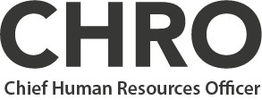HR: don’t kill performance measurement!

At a conference where I presented, many speakers mentioned performance management. What I sensed was: the really brave companies have stopped with performance management, the middle group have stopped with performance ratings, and the laggers are refining and improving their traditional performance management system.
I think there is a big danger that we throw the baby out with the bath water. There is nothing wrong with performance management!
Five considerations.
1. Performance management and performance ratings are not the same
An important element of performance management is giving people feedback they can use to improve their performance. A problem is that many people do jobs in which the results are not so concrete, and it is not so easy to give concrete helpful feedback. This is worsened if the feedback is given only once per year by someone (often ‘the boss’) who has not seen the employee in real action very often. To suggest some kind of concreteness in the feedback, performance rating scales have been designed. You can write a master thesis about the rating scales. Often a five-point scale, from 1=considerable improvement opportunity to 5=major strength, but in my collection of performance appraisal forms you can see a great variety.
It is not very helpful to get a performance rating once per year, communicated by your boss in a patronizing way, because generally it is very difficult to determine how you can use the rating to improve your strong capabilities. And if the rating is used to compare you to others and to determine your salary increase. It is an too easy way out improving a poor system by getting rid of it al together.
2. Measuring performance helps to get better
If you want to improve your performance it helps to get feedback. I am a runner and I want to improve my performance on the half-marathon. A crude rating comparing me with other runners is not very helpful. My last half-marathon I ended as number hundred in a field of 400, and I was number 10 of the people in my age range. The performance rating I would have received was a 4 on a 5-point scale: above expectations. Thank you, but this feedback does not help me to improve my performance. The race is an outcome of many variables. My age (difficult to change), my physical condition, my weight, the way I trained, my motivation on the day of the race etc. Luckily I am able to measure a lot, and luckily performance in this case is very clearly defined: the time it takes me to run half a marathon. Feedback that can help me is feedback by an experienced trainer, who has coached other runners. His or her advice will not be: your current rating is 4, and I advice you to run faster and train harder. The input that helps the trainer (and me): my training log, my heart rate measurements as captures by my running watch and the video that captured my ineffective running style.
3. To help top performers, granular measurement is needed
Generally it is easier to give average performers feedback and advice that helps them to get better, than to help top performers to get better. There is a school that argues that it is more beneficial for organizations to focus on making average performers better than to try to make top performers better. The impact on the organization will be bigger if you improve the performance of the average performers a couple of percent (and create a new average on a higher level). But top performers often deliver top results, and they are very motivated to improve. With very granular measurement and observations a top coach might be able to help them. A 5-point scale is not detailed enough, as they will always be a 5. A 100-point scale measuring relevant behaviour might be better, as they can then practice to move from let’s say 93 to 94 and higher.
4. If you measure real performance, you will be able to detect your top performers
Various authors have outlined that performance does not follow a bell curve (as Josh Bersin in “The myth of the bell curve”). Performance of people is better described as a power law distribution. Power Law DistributionTop performers are able to perform many times (2x, in some professions 10x) better than average (read the classic “Making star teams out of star players”). How are you able to detect these top performers in your organization if you measure performance on a 5-point scale, or worse, if you do not quantify performance at all? A six-point scale going from 1 to 5 and then jumping to 10 might be better….6-point high performance scale.
How to find measures of real performance? This is not always easy, but I am sure a lot more effort can be put in to find ways to connect business performance to teams and individuals. 100% perfection is not required. If you are able to detect the high performers, you can start your people analytics machine, to determine common characteristics of these high performers and to use these to find more inside or outside.
5. Give feedback with respect, and you don’t have to be soft
Most people like to improve their performance. Most people like to get better. Most people like to get frequent constructive and detailed feedback they can use to improve their performance. Getting rid of numerical feedback is not the solution. Making sure the numbers mean something is a better solution. Ranking and rating people is often not very helpful, although it might give an indication how much improvement is possible. It is also difficult to give people ratings, especially low ratings, in a respectful way. Comparing against peoples own prior performance can be more helpful. I know some people can run a marathon below 2.10, but I know I will never be able to do this.
Comparing my current performance against other races I ran gives me an indication of where I stand today.
Five considerations about performance management. The current opportunities created by people analytics give HR fantastic tools to improve performance management. Removing performance management from the HR agenda (and calling this ‘brave’) would be a mistake.
—
Tom Haak is the founder and director of The HR Trend Institute. He is also partner at Crunchr. Prior to founding the HR Trend Institute in 2014, Tom held senior HR positions in companies as Arcadis, Aon, KPMG and Philips. The HR Trend Institute detects, follows and encourages smart and creative use of trends in the field of people and organizations, and also in adjacent areas.












